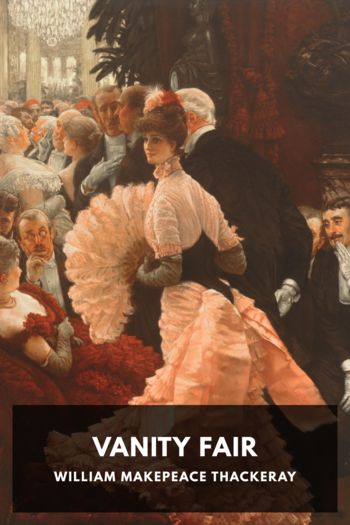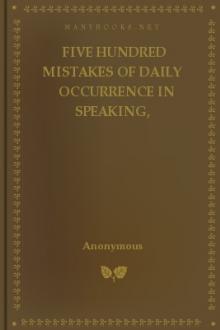Approaching Zero, Paul Mungo [good summer reads TXT] 📗

- Author: Paul Mungo
- Performer: -
Book online «Approaching Zero, Paul Mungo [good summer reads TXT] 📗». Author Paul Mungo
causes all incoming calls to circle idly around the switch.
Software problems are not uncommon, but few have such spectacular effects. And
coming so soon after the computer bomb threat, rumors flourished that AT&T had
been hit by hackers. In the course of researching this book, the authors were
told more than once that the AT&T failure had been caused by a computer bomb.
One source even claimed he could identify the culprit. The rumors continue to
circulate, as they do about everything in the computer underworld.
However, there is absolutely no proof that it was a computer bomb, and AT&T’s
final, official explanation remains that the shutdown was caused by an errant
piece of software.
The attack did not affect the emergency 911 numbers, which are handled by local
carriers. Nor, even if it was a bomb, was it likely to have been linked to the
previous incident. But it had taken place on a national holiday—Martin Luther
King Day—and the coincidence bothered the authorities.
On January 18th, three days after the AT&T system collapsed the Secret Service
began a nationwide sweep, targeting hacker gangs—in particular the Legion of
Doom—and anyone who appeared to be a threat to the phone system.
Their first call was on Knight Lightning. The handle belonged to Craig Neidorf,
a twenty-year-old prelaw student at the University of Missouri in Columbia, and
one of the coeditors of the underground newsletter PHRACK. He was found in his
room on the third floor of the Zeta Beta Tau fraternity house. Special Agent
Tim Foley, who had been investigating the attacks on the telephone computer
switches for seven months, and Reed Nolan, a security representative from
Southwestern Bell Telephone, questioned Neidorf about an article in PHRACK on
the electronic switching systems. They also brought up the E911 document. They
knew that Neidorf had received a copy of the file from the Prophet, and had
published it in PHRACK in February 1989. According to Foley, Neidorf admitted
knowing that the E911 tutorial had been stolen from BellSouth.
The next day Foley returned with a search warrant and the local police. The ESS
article had been forgotten; Neidorf was instead charged with ten felony counts
centering on the publication of the E911 file in PHRACK. If found guilty, he
faced a sentence of up to sixty-five years in prison.
On January 24, 1990, the Secret Service operation moved to Queens, New York, to
the homes of several known hackers. The first target was a twenty-year-old
known among the underground as Acid Phreak. When the Secret Service arrived,
they told him that he was suspected of causing the AT&T crash nine days
earlier. One of the agents pointed to his answering machine. “What’s that for?”
he asked. “Answering the phone,” Acid Phreak said. He wasn’t arrested, but
instead was asked to accompany the agents to their headquarters in the World
Trade Center, where he was questioned until the early hours of the morning.
Phiber Optik, who also lives in Queens, was raided next. According to hacker
lore, he was awakened in the middle of the night and confronted with nine
loaded guns, which seems unlikely, as most other raids were conducted by one or
two agents, usually accompanied by a telephone security man. Another New York
hacker, the Scorpion, a friend of both Phiber Optik and Acid Phreak, was also
raided on that day.
On March 1st the action moved to Texas, with an almost comically aggressive
bust of a games publishing company.
The day started early, in Austin, with a dawn raid on the home of Loyd
Blankenship. Loyd, known as the Mentor to colleagues in the Legion of Doom, was
also sysop of an underground bulletin board, the Phoenix Project, and the
author of a series of “hacker tutorials” in PHRACK. He and his wife were roused
from their bed by a team of six Secret Service agents, a local cop, and a
representative from Bellcore.
While his own computer and equipment were being seized, Loyd was driven to his
office at Steve Jackson Games. The company specialized in publishing computer
games, most of them involving role-playing of one sort or another. At the time
it employed fifteen people and had a turnover of $500,000. Founded
by Steve Jackson, the company also ran its own, completely legitimate bulletin
board, which functioned as an information service for its customers. The only
remarkable thing about the bulletin board was its name—Illuminati, after the
secret, world-dominant sect that had so exercised the Soviet hacker gang.
Computer enthusiasts the world over clearly read the same books.
Steve Jackson himself arrived at the office just as the Secret Service agents
were attempting to kick down the door. The agents were offered a key instead.
They spared the door but did prefer to force open a locker and to cut the locks
off of the outside storage sheds, despite being offered the appropriate keys.
The agents seized all the computer equipment they could find. They also tore
open cartons in the warehouse, looking for a handbook on computer crime that
was in preparation: they intended to seize all copies before it could be
distributed.
The “handbook on computer crime” later turned out to be an innocent game about
computers called GURPS Cyberpunk, published by Steve Jackson Games.s The mere
fact that Loyd had chosen the name Cyberpunk had led the authorities to
conclude that the program was part of a conspiracy to spread hacking techniques
nationwide. The Secret Service seized all copies of the game at the company’s
premises and made doubly certain that they collected the data for Loyd’s manual
as well.
Two months later Operation Sundevil struck again. On May 8th coordinated raids
on hackers in fourteen cities were carried out. Over 150 Secret Service agents
were deployed, teamed with numerous local and state law enforcement agencies.
The agents served twentyseven search warrants in Chicago, Cincinnati, Detroit,
Los Angeles, Miami, Newark, New York, Phoenix, Pittsburgh, Plano (Texas),
Richmond, San Diego, San Jose, and Tucson. Forty computers and 23,000 diskettes
were seized.
The official reason for the busts was telecommunications fraud. The raids were
synchronized in order to completely surprise the hacker community and prevent
important evidence from being destroyed.
But that nearly happened anyway. As reports of the Atlanta and New York raids
circulated, a number of hacker boards carried warnings that another “major
bust” was imminent. (Captain Zap, the Philadelphia hacker arrested years before
for theft, takes credit for the messages.) One of those who took the warnings
seriously was Erik Bloodaxe, the LoD member who was so keen on selling U.S.
military secrets to the Soviets. All his equipment, as well as any documents
that could incriminate him, was hidden away before the raids. When the Secret
Service and local cops burst in on him, he was the picture of innocence. With
little to choose from, the agents considered taking away his PacMan game—then
decided to take his phone instead. It was the only piece of hacker equipment
they could find.
Others were less lucky. As the Secret Service raided homes of known hackers,
carrying away boxes of diskettes and computer equipment, they were invariably
asked, “When do I get my system back?” The authorities were well aware that
confiscating equipment for use as evidence later—should there ever be a case—
was punishment in itself.
During the raids half the members of the Legion of Doom were busted. MoD and
DPAC were less affected than the Legion by the busts, but the aftershock would
cause DPAC to split up, and MoD would come to grief the next year.
The spluttering, intermittent hacker wars had ended in default. The Secret
Service had broken the hacker gangs and brought law and order to Cyberspace. Or
so it seemed.
But support for hackers was building—unwittingly aided by the FBI, the Secret
Service’s rival in the bureaucratic battle for responsibility for computer
crime. On May 1, 1990, an FBI agent named Richard Baxter, Jr., drove to
Pinedale, Wyoming, for a meeting with John Perry Barlow. The two men came from
different worlds. Barlow was a bundle of idiosyncrasies and contradictions, the
sort of man who seems to survive only in the American West: aged forty-two, a
former rancher, the Lyricist for the Grate—
ful Dead, and also the local Republican party county chairman he believed in
the frontier, both the real one around Pinedale and the electronic one
accessible through his computer. Barlow wasn’t a hacker, but he was part of
something called WELL—the Whole Earth Electronic Link, the embodiment of the
sixties counterculture surviving in the 1990s on an electronic bulletin board
based in Sausalito, California. His philosophy was a mix of sixties liberalism
leavened by a rancher’s rugged individualism; he was a Republican hippie with a
computer.
Agent Baxter was a country boy who “didn’t know a ROM chip from a vise grip,”
according to Barlow. He wanted to talk to Barlow about high-tech crime,
although hackers were not his usual beat.
Baxter was investigating the theft of the operating system source code for the
Macintosh computer. According to Baxter, it had been stolen by a group that was
threatening to destroy the American company by releasing the code to East Asian
manufacturers of Apple clones.
Briefed at length by his San Francisco office, Agent Baxter told Barlow that
the FBI wanted to interview John Draper, the legendary Captain Crunch. Draper,
the FBI believed, was a known member of the Hackers’ Conference, an underground
association with likely ties to those responsible for the theft. The FBI also
believed that Draper was the chief executive of Autodesk, a software company
with many top-secret government Star Wars contracts.
Jurisdiction for this particular investigation had fallen to the FBI, not the
Secret Service. It was one of the oddities of U.S. Iaw enforcement that even
when the responsibilities of the two agencies overlapped, their intelligence
and resources were almost never pooled. And in this case, Barlow knew that the
FBI agent’s information was almost completely wrong.
Draper wasn’t the chief executive of Autodesk, though he had worked there as a
programmer at one time, and Autodesk was not a major Star Wars contractor, but
a software developer. Also, the Hackers’ Conference was not an underground
association, but an annual gathering of the nation’s brightest and most
respected computer experts. As for the group that had supposedly stolen the
Macintosh source code, Barlow presumed that the agent was referring to the
self-styled nuPrometheus League, which had been circulating filched copies of
the Macintosh code to annoy Apple. Opinion in the computer underground was that
the code was probably picked up by kids who’d been dumpster diving. (The ethos
at Apple had changed since 1979. Then it was a small company with roots in the
hacker community; now a major corporation, it called in the FBI to chase down
kids for dumpster diving.)
The only thing that the FBI had gotten right, Barlow reckoned, was the address
of Autodesk. So Barlow explained to Baxter what was really going on, spending
most of the two-hour interview educating him about source codes. THINGS HAVE
RATHER JUMPEDTHE GROOVE WHEN POTENTIAL SUSPECTS MUST EXPLAIN TO LAW
ENFORCERS THE NATURE OF THEIR ALLEGED PERPETRATIONS, he said
in his posting to the WELL about the incident.
Barlow’s message produced an unexpected response. A number of other
WELL-beings—the users’ excruciatingly cute name for themselves—had also been
interviewed by the FBI. They had all heard pretty much the same garbled story.
Baxter had only been repeating the information contained in the agency’s files.
The entire Bureau seemed to be working on erroneous data. It was enough to
tweak the ideological hackles of any Republican hippie, particularly one who
believed in the new





Comments (0)